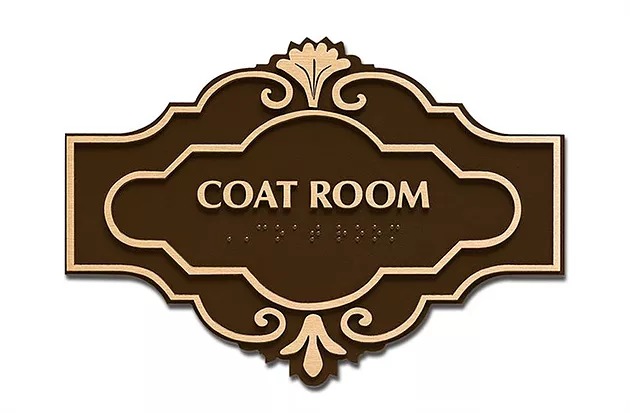Compliance with the Americans with Disabilities Act (ADA) spans a myriad of facets that affect the way you do business on a daily basis. Some of the most frequently overlooked aspects are ADA and Braille signs in Charlotte, NC, office buildings and retail locations. Are you on the right side of the law?
Understanding the Need for Compliance

What makes the ADA so confusing for business owners is the fact that the law excuses some companies from falling in line with its requirements. Concerning signage, there are some situations in which you do not have to comply, either. We recommend erring on the side of caution (as well as good business sense) and displaying ADA signage to assist your clients or customers.
Of course, you can directly discuss your compliance requirements with our experts who can give you better insight about your particular situation. The majority of businesses must display ADA and Braille signage to label functional, permanent spaces at their venues. Examples include the conference rooms, restroom areas, and exits.
Signage Examples

You do not have to order accommodating signs that display directories or office occupant names. That said, more and more businesses, particularly educational facilities, do. The signs that do require conformity to the rules of the ADA are primarily directional in nature.
- Safety signage. Identify directions pointing to the emergency exits, refuge areas, and stairs with ADA signage.
- Room labels. The act governs room markers that indicate locations unlikely to change anytime soon. Examples include the conference room, restroom, kitchen or waiting room.
- Directions. Signal the way to the elevator lobby, the concierge desk, or the business services center in your office building with signs that feature compliant features.
How ADA Signs Differ from Standard Signs

For the longest time, ADA signage stood out because it simply did not fit in with the interior décor of most settings. This reality has changed. There are three distinct features that the products must meet, which you can achieve while keeping your interior décor intact when working with a sign maker in the know.
1. Pictographs, Braille, and fonts. Predefined, raised symbols signal to visually impaired visitors what room a sign labels. The preferred font is Helvetica Regular although there are other options as well. A Braille 2 translation of the written words on your signs must be placed right underneath the print.
2. Color contrasts. The law requires a 70-percent color contrast. We can frequently meet this requirement by using a company’s color and then selecting another hue that provides the necessary difference.
3. Mounting locations. Installation must take place at predetermined locations and heights.
Standard signs do not have to follow these requirements and may feature any fonts, symbols, color combinations and mounting heights or positions that you prefer.
Ordering ADA and Braille Signs in Charlotte, NC
Contact our graphic artists to learn more about your options and to discuss your need for ADA compliance. If you are unsure whether your current signage is sufficient, simply invite us out for a site survey. We inventory your present signage displays and point out areas where you are missing ADA signage products. Contact us today to get started on this process.

